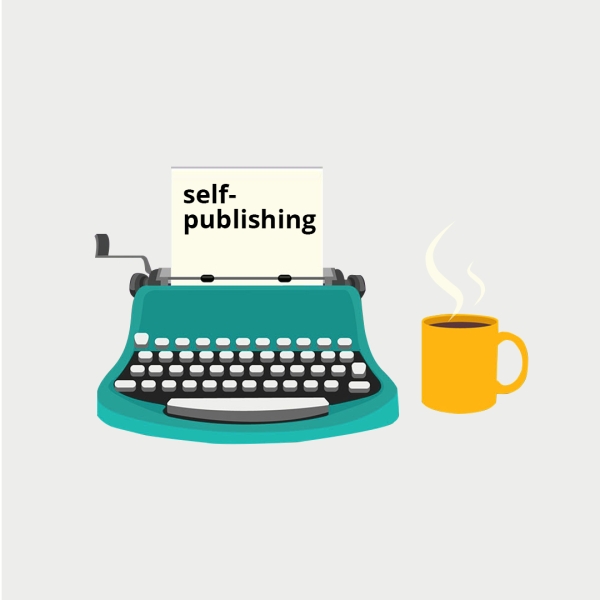Publishing a graphic novel is like juggling while riding a unicycle—you’re balancing two powerful mediums: art and story. One misstep and your masterpiece might tumble into oblivion. Yet, when done right, graphic novels have the power to enthrall readers, build lifelong fan bases, and create entire worlds that leave a lasting impression.
The graphic novel industry is growing at breakneck speed, attracting both seasoned creators and ambitious newcomers. Whether you’ve felt compelled to bring your first book idea to life or you’re working on your second graphic novel to cement your place in the industry, understanding the publishing process is crucial.
But here’s the twist: You have two main paths ahead of you. You could take the DIY self-publishing route, becoming the captain of your own creative ship. Or, you could go down the traditional publishing road, teaming up with major publishers to bring your vision to life. Both options come with their unique challenges, but one thing is certain: publishing graphic novels is an art in itself. Getting a book published, whether traditionally or through self-publishing, significantly increases its visibility and availability in retail outlets and online stores.
Ready to dive in? Grab your sketchpad and script—we’re about to explore the ins and outs of publishing your graphic novel masterpiece!
Your Publishing Journey Awaits – Start NowUnderstanding Graphic Novels: Art Meets Story
What Makes a Graphic Novel Stand Out?
Graphic novels are more than just comic books in fancy outfits. While comic books are often serialized and short, graphic novels typically tell a complete story in one volume. They also come in a wide range of genres, from gritty crime dramas to lighthearted family adventures—and even experimental, boundary-pushing works of art.
At their core, graphic novels are a perfect marriage of storytelling and visuals. A strong script combined with stunning artwork can captivate readers in ways few other mediums can. Think of your favorite graphic novel. What stuck with you—the twists of the story, the character’s emotions, or the dynamic artwork? Chances are, it was a combination of all three.
When creating your graphic novel, think about the big picture. How does your art support your story? Are your characters visually distinct? And does your format—full color, black-and-white, or grayscale—serve your creative vision? By starting with these essentials, you’ll set yourself up for success.
Creating Your Graphic Novel
Creating a graphic novel is a journey that begins long before the first panel is drawn. It starts with a spark of an idea and evolves through careful planning and creativity. Before diving into the artistic process, take a moment to define the scope, genre, and target audience of your project. Are you crafting a dystopian adventure, a heartfelt coming-of-age story, or perhaps a whimsical fantasy? Knowing your genre will help guide your storytelling and artistic choices.
Next, think about the themes you want to explore and the message you want to convey. What do you want your readers to take away from your graphic novel? Developing a rough outline of your story is crucial at this stage. Sketch out character profiles, plot twists, and settings. This outline will serve as your roadmap, ensuring that your graphic novel flows smoothly from start to finish. By laying this groundwork, you’ll set yourself up for a successful and cohesive project.
The Publishing Journey: Where to Begin
From Idea to Manuscript: Your First Steps
Before you can publish, you need a solid foundation. For most creators, this begins with a clear idea and a well-thought-out full script. Think of your script as the blueprint for your graphic novel—it lays out the dialogue, characters’ actions, and pacing for each panel.
If you’re not an artist, this is also the stage where you’ll want to partner with an illustrator or comic artist to bring your vision to life. Collaboration is key, and finding someone who understands your style and story is worth the effort. Additionally, consider the option of working with a traditional publisher, which can offer the benefit of physical distribution to bookstores.
Lastly, format matters. The industry standard for graphic novels varies, but most are between 60 to 300 pages, depending on your story’s complexity. Whether you’re planning a short tale or an epic saga, having a clear vision at this stage will make your journey much smoother.
Your Publishing Journey Awaits – Start NowPreparing Your Manuscript
With a solid outline in hand, it’s time to transform your ideas into a full-fledged manuscript. A graphic novel manuscript is more than just a script; it’s a detailed blueprint that includes character descriptions, panel layouts, and dialogue. Your full script should be concise yet descriptive, providing enough detail for your artist to visualize each scene. Include page breaks and panel descriptions to guide the pacing and flow of your story.
Effective communication with your artist is paramount. Share your vision clearly and provide any relevant notes or references that can help them bring your story to life. Remember, your manuscript is the foundation upon which your graphic novel will be built, so take the time to craft it with care and precision.
Self-Publishing Graphic Novels: The DIY Approach
Taking Control: Self-Publishing Your Graphic Novel
Self-publishing is the rebellious teenager of the graphic novel world—it’s bold, independent, and full of creative freedom. With self-publishing, you get to call all the shots, from creating the artwork to choosing the cover design to deciding how your book is distributed.
Platforms like Amazon Kindle Direct Publishing (KDP), IngramSpark, and ComiXology make it easier than ever to self-publish your graphic novel. Whether you’re planning a print run or releasing your work as an ebook, there are tools for every budget and ambition.
But with great power comes great responsibility (yes, we went there). As a self-publisher, you’re not just the creator—you’re also the marketer, editor, and sales team. You’ll need to find creative ways to grow your fan base, whether through social media, crowdfunding campaigns, or attending conventions. It’s a lot of work, but for many creators, the reward of maintaining full control over their vision is worth it.
Traditional Publishing: The Established Path
If self-publishing is the rebellious teen, traditional publishing is the seasoned professional with a polished résumé. Going this route means working with major publishers, who take care of printing, marketing, and distribution. It’s a dream scenario for many graphic novel creators—if you can get your foot in the door. Over a span of a few years, many creators transition from traditional employment to becoming full-time creators, evolving their skills and gaining valuable experience.
Start by submitting your manuscript to publishing houses that specialize in graphic novels. Many publishers require a full script along with sample artwork, so team up with an illustrator if needed. It’s also highly recommended to work with a literary agent who has connections with traditional publishers and can help negotiate the best deal.
Once accepted, you’ll collaborate with editors to refine your project. While publishers provide the resources and reach to get your book into stores worldwide, you’ll need to be open to their feedback. The trade-off? Less creative control, but a higher chance of your book reaching a wider audience.
Building Your Team
As a graphic novel author, you don’t have to go it alone. Building a team of professionals can elevate your project to new heights. This team might include an artist, colorist, letterer, and editor. When selecting team members, look for individuals who share your vision and are passionate about your project. Review their experience, skills, and portfolios to ensure they’re a good fit for your graphic novel’s tone and style.
Effective communication is the cornerstone of a successful collaboration. Establish clear expectations, deadlines, and communication channels from the outset. Regular check-ins and feedback sessions can help keep everyone on the same page and ensure that your project stays on track. By assembling a dedicated and talented team, you’ll be well-equipped to bring your graphic novel to life.
Building Your Graphic Novel Career
Publishing your first graphic novel is just the beginning. Now comes the exciting (and sometimes nerve-wracking) task of building your career as a graphic novel creator.
If you’re planning your second graphic novel, use what you’ve learned from your first experience to refine your process. Reach out to your readers—what did they love about your first book? What could you improve? Building a loyal fan base is crucial, as they’ll likely be your biggest supporters for future projects.
Attend conventions, engage with other creators, and expand your online presence. The graphic novel world thrives on community, so make connections and keep honing your craft. Every new project is a chance to grow as a writer, artist, or collaborator.
Your Publishing Journey Awaits – Start NowTips for Success: Blending Creativity and Practicality
Balancing Art, Story, and Publishing Challenges
Here’s the million-dollar question: How do you balance your creative vision with the practicalities of publishing? First, learn to embrace feedback—whether it’s from an editor, a collaborator, or your readers. They can offer fresh perspectives that enhance your work.
Second, don’t let rejection get you down. Even the most celebrated graphic novels faced their fair share of “no’s” before finding success. Keep refining your pitch, improving your craft, and reaching out to publishers or audiences.
And finally, protect your creative spark. Publishing a graphic novel is hard work, but it’s also a labor of love. Stay true to your story, and don’t be afraid to take risks.
Conclusion: Start Your Graphic Novel Journey Today
Publishing graphic novels isn’t just about putting your work out into the world—it’s about sharing your creativity, inspiring readers, and contributing to a thriving art form. Whether you decide to self-publish and take control of every aspect or go the traditional route with a publisher guiding your path, the journey will be as rewarding as the final product.
So, what are you waiting for? Your characters are waiting to leap off the pages, and your readers are ready to dive into your world. Whether it’s your first book or your tenth, there’s no better time to bring your graphic novel idea to life.
Ready to take your next step? Let Spines help you publish your graphic novel with ease. With Spines, your book is set to transcend the ordinary and make a significant impact in the new era of publishing. Sign up for free to start your self-publishing journey.
Your Publishing Journey Awaits – Start Now







